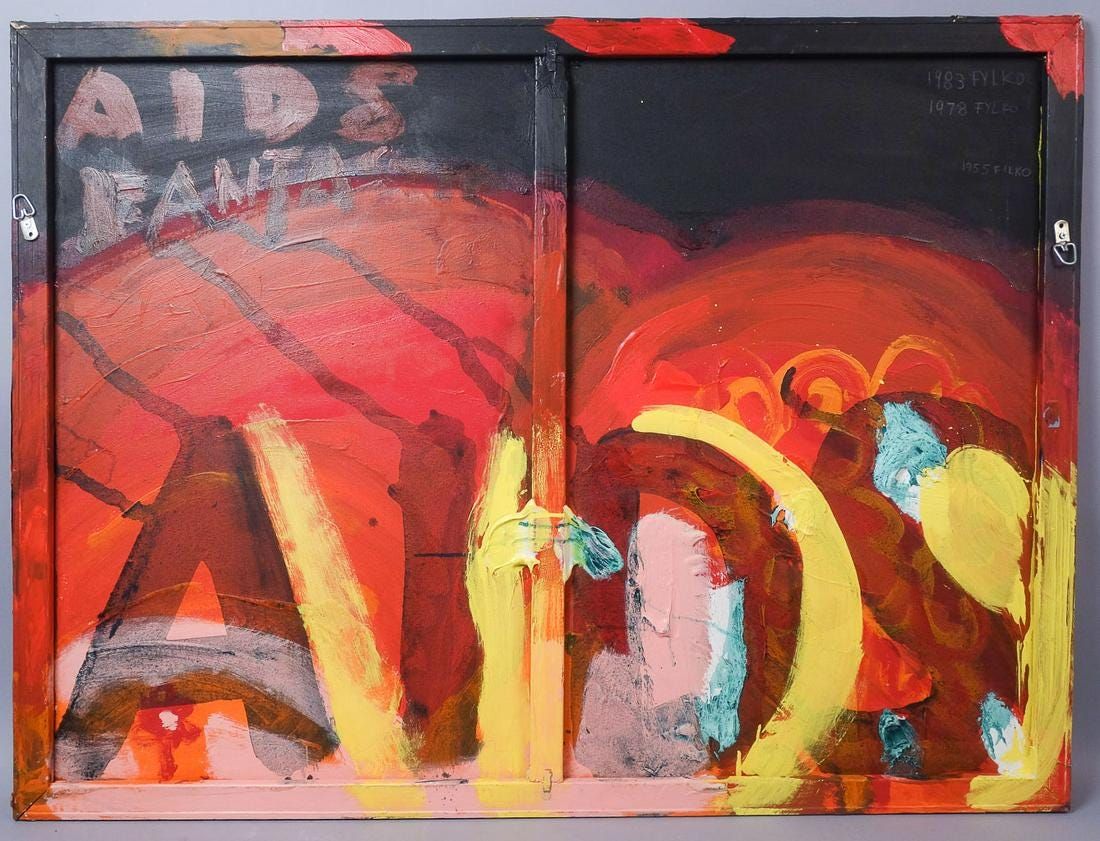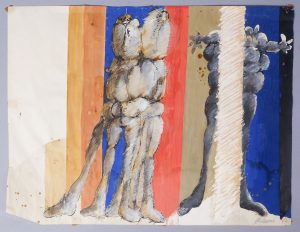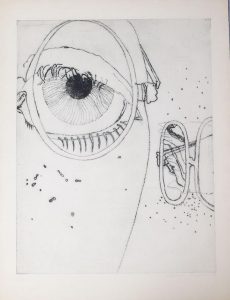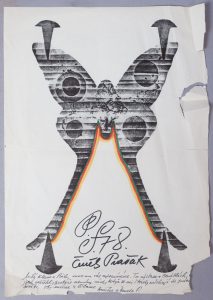
Self-Expression vs Communism: Art During Communist Controlled Czechoslovakia + Feb 6 Auction
When the Iron Curtain fell across much of Central and Eastern Europe, communism took control over almost a third of the world’s population. During the 40 year reign of the communist state in Europe promotion of the self was banned in favor of the advancement of the masses. Most art at the time championed the glory of communism and the state with a few statues of Lenin and Stalin dotted in the town squares (so the people could be constantly be reminded of who their true leaders are). Art as a form of personal expression was banned, or so the communist governments liked to believe. Like their Soviet overlords, the “sovereign state” of Czechoslovakia cracked down on white-collar occupations like artists in favor of industrialization. Many artists were put out of work and forced to work as laborers like miners and heavy machinists in factories. Many fled to the West where they had freedom of self-expression.
Despite the communists best efforts, forms of self expression did not go away, they merely went underground. Since the fall of communism in Central and Eastern Europe in the 1990s, many oppressed artists finally started to get the recognition they deserved. The artists and work highlighted in this blog post can be found in Mark Lawson Antiques upcoming auction, which features pieces by over 50 artists from the private collection of a single owner, consignor.
Jozef Jankovič-Slovakian

Born in Bratislava in 1937, Jozef Jankovič studied at the Academy of Fine Arts in Bratislava under Jozef Kostka. Throughout the 1960s, Jankovič showed his sculptures and reliefs in private exhibitions organized by the Confrontations movement in order to stay under the radar of the communist government.
In 1968-9, the normalization regime began in Czechoslovakia, which worked to undo to reforms of liberalization that began several years before. During this time, Jankovič’s work was barred by the communist government until 1990. As a result, he publicly began making jewelry, computer graphics, and architecture. However, this did not end Jankovič’s painting and sculpting endeavors in private. In 1968, Jankovič produced his most famous work, Private Manifestation, which rebels against the socialist icons of Lenin and Stalin. Throughout the rest of life, Jankvoič continued to paint and sculpt speaking to masses of the Slovak people.
Adriena Šimotová-Czech

Born in Prague in 1928, Adriena Šimotová spent her life as an artist working with paper and textiles. She graduated from the Academy of Arts, Architecture and Design in Prague. In the 1960s, she helped to found the group UB 12, a group of Czech artists along with her husband and fellow artist, Jiri John. The group worked to preserve the Czech traditions that were constantly trying to be suppressed by the communist regime. During this time, she also exhibited her work at the Václav Špála Gallery in Prague and the Sao Paulo Art Biennial.
Following the death of her husband and her son in the early 70s, Šimotová changed her medium to sculpture and fabric installations. The regime of normalization regime that stopped Jozef Jankvoič from publicly exhibiting his work also affected Šimotová. During this time, much of her work could not be shown or was heavily censored for depicting the “self”. In 1997, she received the Czech Medal of Merit, and in 2000 she received the Herder Prize, “a prestigious international prize awarded every year to scholars and artists from Central and Southeast Europe whose life and work have contributed to the cultural understanding of European countries and their peaceful interrelations.” Several of her works are held in permanent collection at the Pompidou Centre in Paris. Until her death in 2014, Šimotová’s pieces focused on the single human figure, a symbol of the one against the many.
Čeněk Pražák-Czech

Čeněk Pražák was born in Prague in 1914 to a businessman father and housewife mother. Growing up, Pražák had private lessons under various tutors until 1934, when he studied in Paris. During WWII, Pražák worked as a book illustrator, but after the communist takeover after the war, he lost his profession when all of the publishing houses shut down. Throughout the 1950s, Pražák worked as an unskilled laborer in various jobs, and was seldom able to work on his art. In the 1960s, Pražák decided to devote himself to his painting.
In 1960, He joined the art group May 57, which strove to break away from the strict art of the communist regime through forms of modern art. Throughout the decade, Pražák showed at exhibitions all over the country, and began to exhibit in other European countries. He experienced the Russian occupation firsthand in 1968, and knowing that his freedom of expression would be taken away, he decided to leave Czechoslovakia. Pražák emigrated to Switzerland, and began showing in exhibitions throughout Western Europe. In 1983, he was elected president of the Swiss Society for Science and the Arts, and earned Swiss citizenship in 1989. For the first time since his departure in 1991, Pražák returned to Prague for his first exhibition in his home country since 1969. in 1993, a documentary on Pražák’s life was made for Czech National Television. After his trip in 1991, Pražák would never return to Czechia, and he died in Switzerland in 1996.
Conclusion and Auction Event
All of these artists lived and worked in Czechoslovakia during the communist regime, and instead of allowing themselves to be suppressed by the government, they continued with their work. They did not allow the the idea of the many overcome their idea of the individual, and continued to express themselves through their art. All of these works, can be found in our upcoming live, online auction of 20th century Czech and Slovak art on February 6th. The over 500 cataloged works are a part of the lifetime collection of a New York City collector of Slovak, Czech, and related original paintings, prints and sculpture. Highlights include: 9 works by Cenek Prazak, a Bohuslav Reynek drypoint with monotype on paper “Crucifixion”, over 60 paintings and signed prints by Koloman Sokol, 14 oil paintings/mixed media by Stano Filko (most large format some two sided), 15 works by Jozef Jankovic, 7 works by Karel Malich, 84 works by Adolf Benca, 8 works by Adriena Simotova, 24 works by Jan Koblasa, 1 work by Ludovit Fulla, a good group of Old Master etchings by Wenceslaus Hollar and a large maquette by Jo Davidson of a Sculpture Memorial to the Massacre at Lidice.
By Alexandra Ponti
You can view the catalog and bid on items in the auction at:
Live Auctioneers: https://www.liveauctioneers.com/catalog/191468_important-collection-slovak-and-czech-20c-art/
If you have any pieces of fine art please feel free to contact us. We would be happy to help. To schedule an appointment for a free purchase evaluation, call us today at (518) 587-8787 or contact us at marklawsonantiques@gmail.com. We have offices in Saratoga Springs and Colonie, conveniently located for our clients in the Albany, NY, and surrounding Capital Region.
